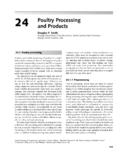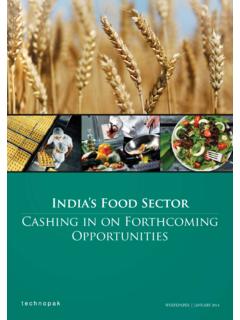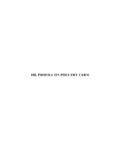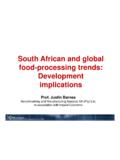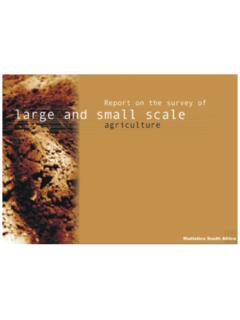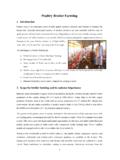Transcription of Exposure to dust and bioaerosols in poultry farming ...
1 Executive Health and Safety Exposure to dust and bioaerosols in poultry farming summary of observations and data Prepared by the Health and Safety Laboratory for the Health and Safety Executive 2008 RR655 Research Report Executive Health and Safety Exposure to dust and bioaerosols in poultry farming summary of observations and data B Crook, A Easterbrook & S Stagg Health and Safety Laboratory Harpur Hill Buxton Derbyshire SK17 9JN This project aimed to investigate poultry farm workers Exposure to organic dusts and associated microbiological contamination as part of the HSE Disease Reduction Programme. The UK poultry industry (mainly the production of hens eggs and chicken, turkey and duck meats) involves a range of activities including laying litter, populating with young birds, depopulating (reducing bird density during growth or removing at the end of the cycle), litter/manure removal, cleaning houses after depopulation and routine crop maintenance and housework.
2 The objective of this study was to measure workers Exposure to airborne dust and bioaerosols (micro-organisms and their products) associated with these tasks in a representative cross-section of commercial poultry production. Previous studies have tended to provide only an overview of agriculture workers Exposure to bioaerosols . However, this is of limited use in assessing health risks, because of the diversity of tasks at different times of the day, week or season. Workers Exposure to dust and bioaerosols is certain to differ according to the task being performed. Therefore HSE was interested to obtain measurement data and to relate Exposure measurements to specific tasks. This report and the work it describes were funded by the Health and Safety Executive (HSE).
3 Its contents, including any opinions and/or conclusions expressed, are those of the authors alone and do not necessarily reflect HSE policy. HSE Books Crown copyright 2008 First published 2008 All rights reserved. No part of this publication may be reproduced, stored in a retrieval system, or transmitted in any form or by any means (electronic, mechanical, photocopying, recording or otherwise) without the prior written permission of the copyright owner. Applications for reproduction should be made in writing to: Licensing Division, Her Majesty s Stationery Office, St Clements House, 2-16 Colegate, Norwich NR3 1BQ or by e-mail to ii ACKNOWLEDGEMENTS We are grateful to Robert Hadway (HSE Policy Group, Agriculture & Food Sector, Nottingham), as the Project Officer for his input to the work and help in identifying study premises, and to Nigel Black (HSE Wales & West Specialist Group) for assistance in data handling.
4 We are also grateful to the management and staff of the companies who participated in the collection of personal Exposure data and explained their processes to HSE and HSL Occupational Hygienists and Analysts. iii iv CONTENTS 1 2 PROCESS 3 HAZARDOUS AGENTS ..6 4 INHALATION Exposure 5 SAMPLING AND ANALYTICAL METHODOLOGY ..10 Total bioaerosol sampling ..10 Microbial Identification of 6 RESULTS OF ANALYSES AND SUMMARISED 7 8 Appendix A: Visit and data Appendix B: 9 REFERENCES ..61 v vi EXECUTIVE summary Objectives This project aimed to investigate poultry farm workers Exposure to organic dusts and associated microbiological contamination as part of the HSE Disease Reduction Programme.
5 The UK poultry industry (mainly the production of hens eggs and chicken, turkey and duck meats) involves a range of activities including laying litter, populating with young birds, depopulating (reducing bird density during growth or removing at the end of the cycle), litter/manure removal, cleaning houses after depopulation and routine crop maintenance and housework. The objective of this study was to measure workers Exposure to airborne dust and bioaerosols (micro-organisms and their products) associated with these tasks in a representative cross-section of commercial poultry production. Previous studies have tended to provide only an overview of agriculture workers Exposure to bioaerosols .
6 However, this is of limited use in assessing health risks, because of the diversity of tasks at different times of the day, week or season. Workers Exposure to dust and bioaerosols is certain to differ according to the task being performed. Therefore HSE was interested to obtain measurement data and to relate Exposure measurements to specific tasks. Main Findings In total, eleven sampling visits to eight different farms were undertaken, covering egg production in battery and free-range or barn facilities, broiler houses and duck rearing. It was not possible to arrange to visit turkey-rearing facilities. Some farms were visited on more than one occasion to obtain data across the range of work undertaken.
7 On each visit the data recorded included activities on site and those monitored, materials involved (directly and indirectly) and potential contaminants present, ventilation and Exposure controls in place. Work task observations were performed and monitoring included total inhalable dust and airborne fungi, bacteria and endotoxins. The results showed that, at maximal Exposure , poultry workers were exposed to total inhalable dust levels exceeding 10 mg/m3 during most activities. Exposure to airborne bacteria potentially exceeded one million cfu/m3 of air in each of the activities monitored. Maximal endotoxin levels ranged according to task from 30 to more than 38,000 EU/m3. Maximal airborne fungal concentrations ranged from 2,000 to 600,000 cfu/m3.
8 The results were consistent with those from previous studies of poultry farms where an association has been made with allergic respiratory ill health. Conclusions and Application Commercial poultry production is a dusty business. poultry farm workers are exposed to high concentrations of airborne dust ranging from a single substance wood dust to a complex mixture which might include inorganic and organic material derived from feed, litter, faecal material, dander (skin material), feather and micro-organisms which could cause respiratory disease including asthma and chronic bronchitis. The data from this study will be used to contribute to a Statement of Evidence , , an objective summary of existing scientific information on the potential for respiratory ill health among workers exposed to poultry dust.
9 This Statement will be used in discussions to be held with representatives of the poultry industry to raise awareness of the health risks and the need for improved controls. This work will also support the development of training and guidance material to deliver key messages to the industry. vii viii 1 INTRODUCTION The HSE Disease Reduction Programme (DRP) is focussing attention on three principal risks to workers health, one of which is respiratory disease. This HSL poultry survey is part of a much wider project (R52149 Dust and bioaerosols in Agriculture) which was to investigate farm workers Exposure to organic dusts and associated microbiological contamination. In the UK agriculture sector there is the potential for significant Exposure to a wide range of substances recognised as the causes of respiratory ill health.
10 Some of these, grain dust, are grouped together and given a Workplace Exposure Limit, (HSE, 2006). However, Exposure to other organic dusts in agriculture is also recognised as having the potential to cause respiratory ill-health. Despite these dusts being the subject of previous research studies, for example in a major European study recently completed (Radon et al, 2002,) their impact is probably underestimated within the industry. Comprehensive or systematic reviews of exposures in either the whole industry or of specific sectors are limited in number, although a recent report by Reed et al (2006) has provided a useful overview, as did an earlier HSL review for HSE (Crook et al, 2003).










